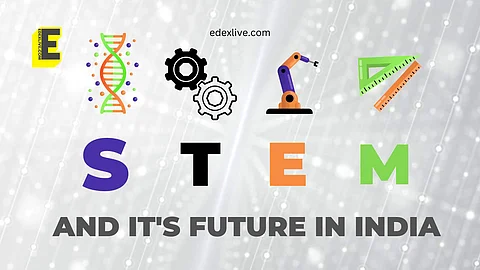

Science, Technology, Engineering and Math (STEM) education is essential for India's future. In a rapidly changing world, STEM skills are essential for individuals to succeed in the workforce and for India to compete in the global economy.
The good news is that there is a growing demand for STEM education in India. The government has made STEM education a priority and there are a number of private initiatives underway to promote STEM education.
However, there are still a few challenges that need to be addressed in order to ensure that all students have access to quality STEM education. These challenges include:
- A lack of qualified STEM teachers
- A lack of resources for STEM education
- A lack of awareness of the importance of STEM education
Despite these challenges, the future of STEM education in India is bright. With the right investments and initiatives, India can become a global leader in STEM education.
Here are some of the trends that are shaping the future of STEM education in India:
The rise of STEAM education: STEAM education is an interdisciplinary approach to learning that integrates Science, Technology, Engineering, Arts and Math. STEAM education is becoming increasingly popular in India, as it is seen as a way to foster creativity and innovation.
The use of technology in STEM education: Technology is playing an increasingly important role in STEM education. Technology can be used to provide students with access to real-world data and simulations, create interactive learning experiences, and connect students with experts in STEM fields.
The focus on problem-based learning: Problem-based learning is an approach to learning that focuses on solving real-world problems. Problem-based learning is becoming increasingly popular in STEM education, as it is seen as a way to prepare students for the challenges of the 21st-century workforce.
These are just a few of the trends that are shaping the future of STEM education in India. With the right investments and initiatives, India can become a global leader in STEM education and prepare its students for the challenges of the 21st-century workforce.
Here are some of the benefits of STEM education:
Critical thinking and problem-solving skills: STEM education teaches students how to think critically and solve problems. These are essential skills for success in any field.
Creativity: STEM education encourages creativity and innovation. Students are often asked to come up with new solutions to problems, which helps them develop their creative thinking skills.
Career opportunities: STEM fields offer a wide range of career opportunities. With STEM skills, students can find jobs in a variety of industries, including technology, engineering, and healthcare.
Problem-solving: STEM education teaches students how to break down complex problems into smaller, more manageable steps. This helps them develop problem-solving skills that can be applied to any area of their lives.
Global awareness: STEM education exposes students to different cultures and perspectives. This helps them develop a global awareness that is essential in today's interconnected world.
Here are some of the ways to promote STEM education in India:
Increase the number of STEM schools and programs: There is a need to increase the number of STEM schools and programs in India. This will help to ensure that all students have access to quality STEM education.
Provide more scholarships and financial assistance for STEM students: There is a need to provide more scholarships and financial assistance for STEM students. This will help to make STEM education more affordable for students from low-income families.
Partner with industry: There is a need to partner with industry to promote STEM education. This will help to ensure that students are learning the skills that are in demand in the workforce.
Use technology: There is a need to use technology to promote STEM education. This will help to make STEM education more accessible and engaging for students.
